When it comes to snakes, most people are either fascinated or terrified. While it’s true that some snakes can be deadly, it’s essential to recognize that not all venomous snakes are a death sentence. Medical advancements and the availability of antivenom have made it possible to survive bites from some of the most notorious serpents. Let’s explore ten deadly snakes from which a bite is survivable, provided you receive prompt medical attention.
1. The Not-So-Fatal Rattlesnake
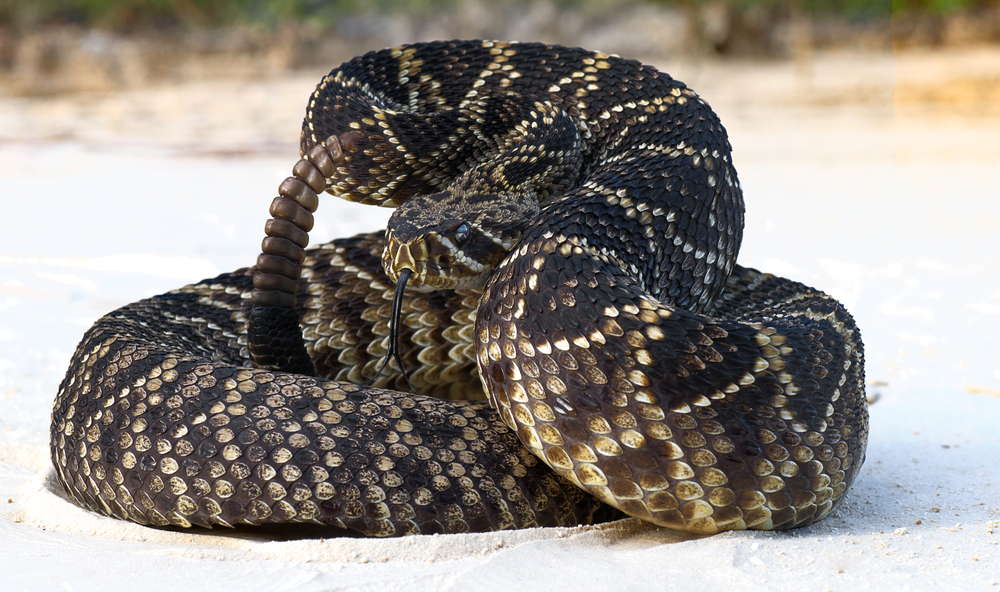
Rattlesnakes are among the most well-known venomous snakes, especially in North America. Their distinctive rattle serves as a warning to potential threats, but sometimes, humans inadvertently get too close. The venom of a rattlesnake can cause severe pain, swelling, and tissue damage. However, according to the CDC, with proper medical care, a rattlesnake bite is rarely fatal to humans. Antivenom treatment is crucial and can significantly reduce the risk of long-term damage or death.
If you are bitten, staying calm and avoiding moving too much is essential, as this can spread the venom more quickly through your body. Elevating the bitten area and keeping it immobilized can help manage the situation until you receive medical attention. Most importantly, seeking immediate help is vital. Remember, a rattlesnake bite is serious but survivable with prompt care.
2. The Mild-Mannered Copperhead
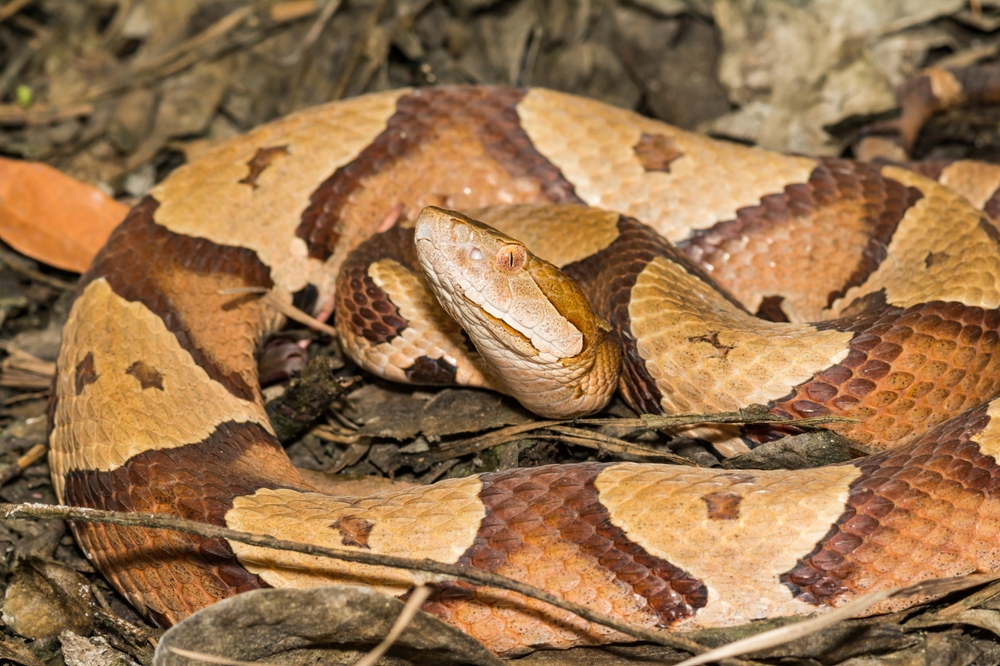
Copperheads are another venomous snake commonly found in the United States, especially in wooded areas. They have distinctive, copper-colored heads and typically prefer to stay out of human way. While their bite is painful, it is rarely fatal. The venom of a copperhead is less toxic compared to other venomous snakes, and fatalities are exceedingly rare. According to the National Institutes of Health, the majority of those bitten by copperheads recover fully with the proper treatment.
If bitten, the symptoms often include immediate pain, swelling, and discoloration at the site. However, it’s crucial not to dismiss a copperhead bite as harmless, as complications can arise if not treated. Seeking medical attention promptly ensures that you receive the necessary care and antivenom if needed. It’s always better to be safe and get checked by a professional.
3. The Secretive Coral Snake
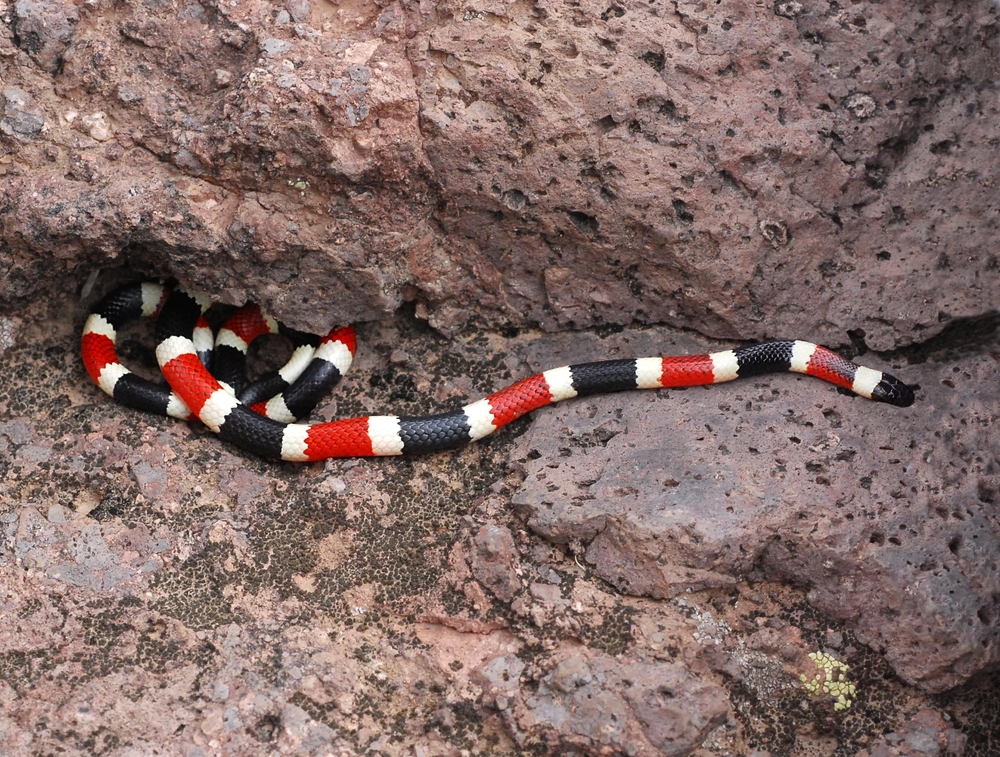
Coral snakes are known for their bright colors and unique pattern, famously remembered by the rhyme, “Red touch yellow, kills a fellow.” Despite their potent venom, coral snake bites are exceedingly rare due to their secretive nature. They are shy and prefer to avoid confrontation. However, When they bite, they deliver neurotoxic venom that can cause paralysis. Yet, according to the Mayo Clinic, a bite from a coral snake is survivable with advances in medical treatment.
If you suspect a coral snake bite, seeking medical attention immediately is critical, even if symptoms are not yet apparent. The venom can take time to act, and early intervention with antivenom is vital. Avoid using a tourniquet, as this can worsen the situation. Instead, focus on getting to a hospital quickly to ensure the best chance of recovery.
4. The Elusive Cottonmouth
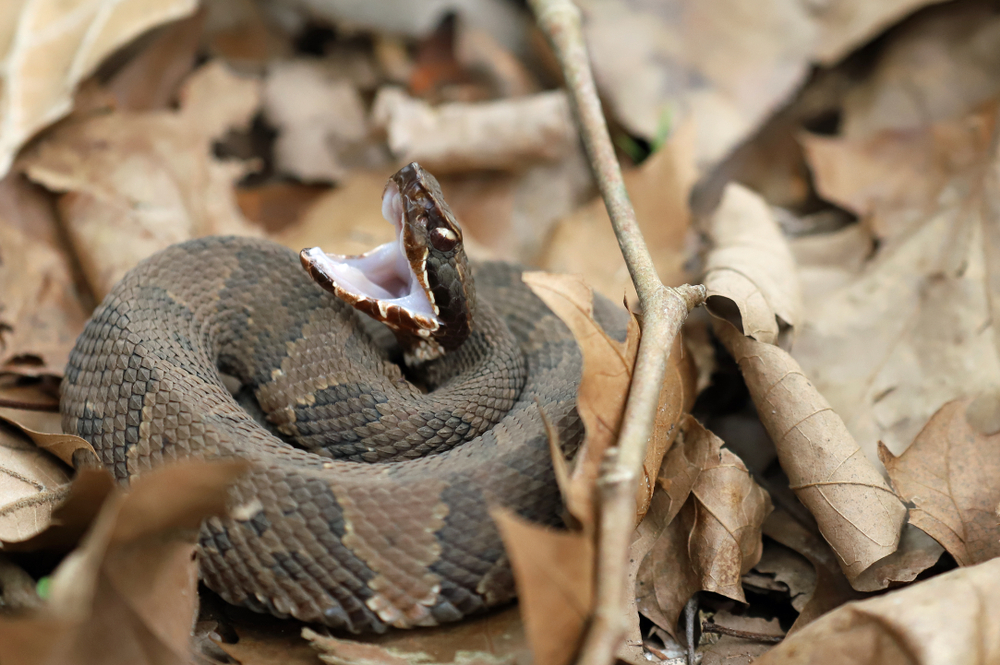
Cottonmouth snakes, also known as water moccasins, are found in the southeastern United States, often near water bodies. They have a reputation for being aggressive, but in reality, they prefer to retreat when threatened. Their venom is cytotoxic, meaning it destroys cells and tissue. Despite this, fatalities from cottonmouth bites are rare because they typically inject only a small amount of venom. Most encounters with these snakes result in dry bites, where no venom is injected.
If bitten, you may experience immediate pain and swelling. It’s crucial to remain calm and seek medical attention without delay. Antivenom can treat the symptoms effectively, reducing the risk of complications. Remember, while the cottonmouth can cause serious injury, survival is highly probable with quick and proper treatment.
5. The Viper That’s More Bark Than Bite
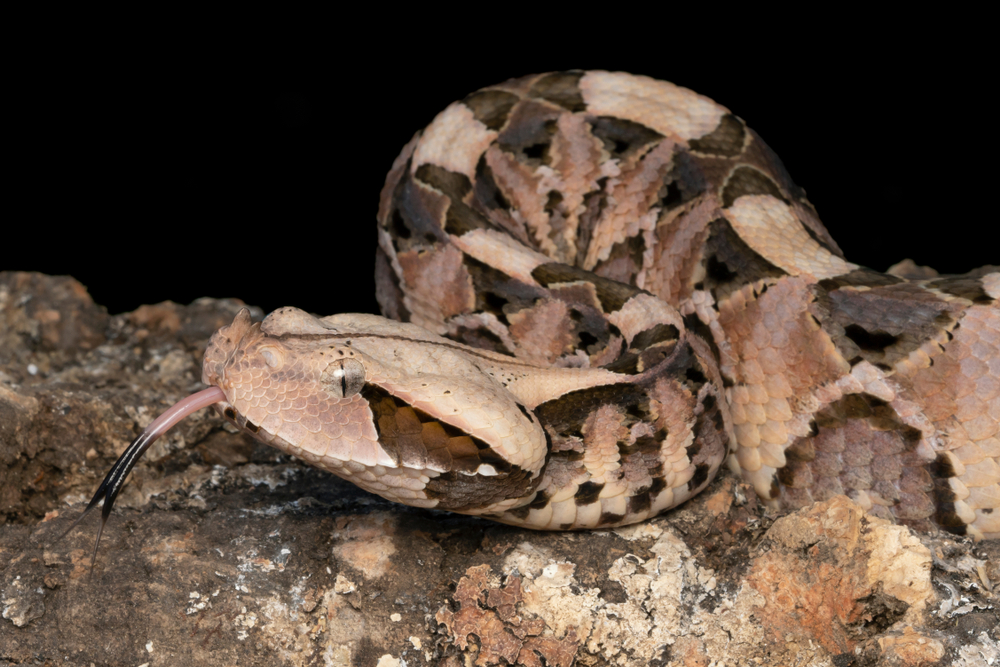
The Gaboon viper is a striking snake known for its beautiful pattern and fearsome appearance. Found in the rainforests and savannas of sub-Saharan Africa, it has the longest fangs of any snake species. Despite its intimidating look, the Gaboon viper is relatively docile and rarely aggressive toward humans. Its venom is a potent mix of hemotoxins that can cause significant tissue damage. However, bites are infrequent due to the snake’s reclusive nature and preference for staying still.
If bitten, immediate medical care is essential to manage the symptoms and prevent serious consequences. The pain can be severe, but antivenom is effective in treating the bite. Avoiding unnecessary movement and keeping the bite area immobilized can help control the spread of venom. With prompt treatment, survival is likely, and long-term effects can be minimized.
6. The Cunning King Cobra
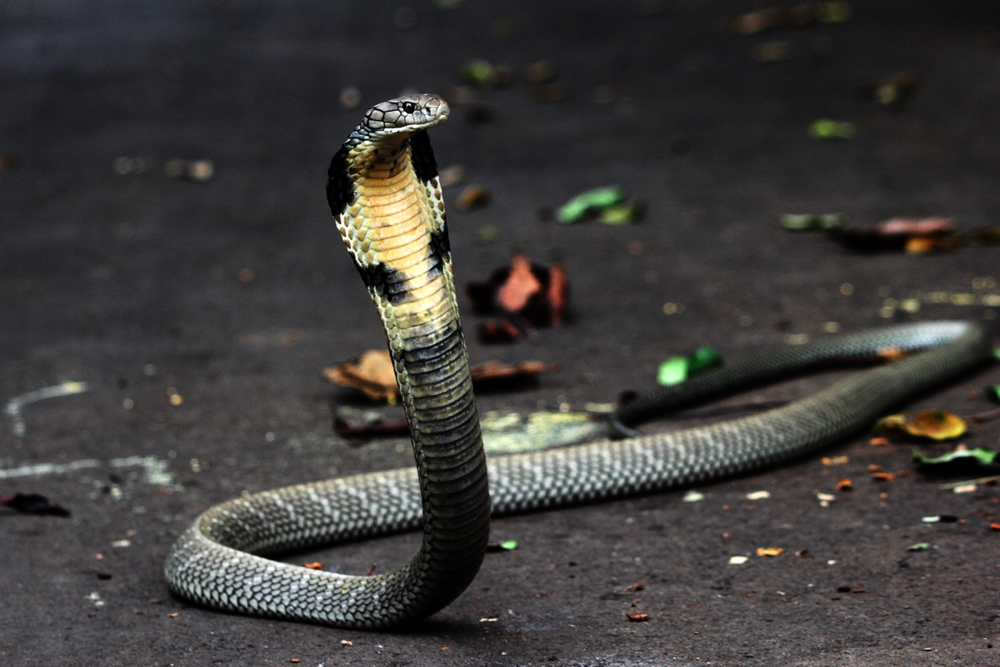
The king cobra holds the title of the longest venomous snake in the world, capable of reaching lengths of up to 18 feet. Native to South and Southeast Asia, its bite can deliver a significant amount of potent venom. Despite its fearsome reputation, the king cobra is more likely to avoid humans and only attacks when threatened. Its venom primarily affects the nervous system, leading to paralysis if not treated. However, with the availability of antivenom and medical care, survival rates are high for those who receive treatment swiftly.
If you encounter a king cobra, it’s best to back away slowly and avoid sudden movements. In the event of a bite, seeking immediate medical attention is crucial. Keeping calm and minimizing movement can slow the venom’s spread. With quick and appropriate intervention, the chances of recovery are excellent, even from this formidable snake.
7. The Patient Pit Viper
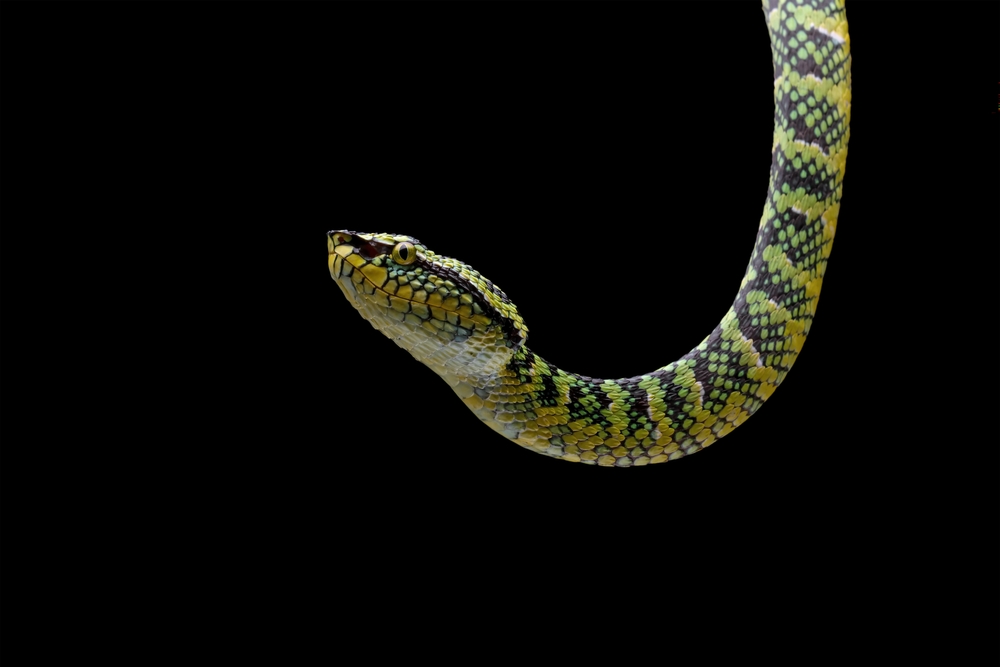
The pit viper family includes several venomous snakes like the fer-de-lance and the bushmaster. These snakes are predominantly found in the Americas and are notorious for their potent venom. However, pit vipers are generally not aggressive unless provoked. Their bites can cause severe pain, swelling, and tissue damage due to the hemotoxic nature of the venom. Despite this, fatalities are rare with modern medical treatment.
If bitten by a pit viper, it’s essential to remain calm and still to prevent the venom from spreading rapidly. Medical attention should be sought immediately for the administration of antivenom. It’s also crucial to avoid using ice or tourniquets, as these can worsen the condition. With timely intervention, recovery is likely, and long-term effects can be managed effectively.
8. The Vibrant but Dangerous Sea Krait
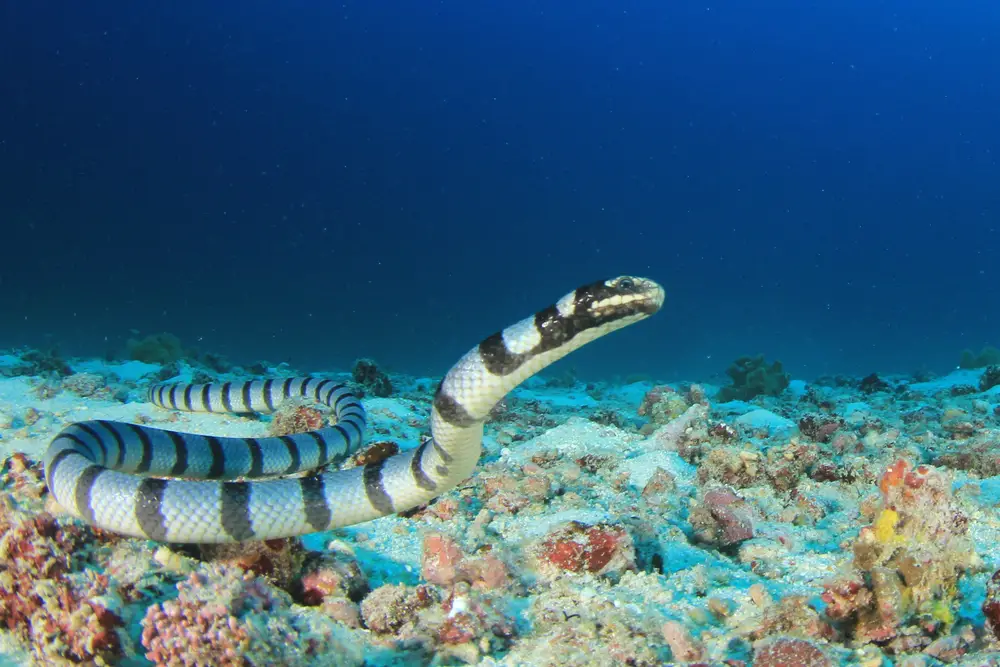 provided by Shutterstock
provided by Shutterstock
Sea kraits are fascinating snakes that live both on land and in the sea, primarily in the warm waters of the Pacific and Indian Oceans. Known for their striking bands of black and white or blue, sea kraits are venomous but not typically aggressive. They possess a potent neurotoxic venom capable of paralyzing prey. However, human fatalities from sea krait bites are exceedingly rare due to their docile nature and infrequent encounters with people.
If a bite occurs, the symptoms may not be immediately apparent, but paralysis and respiratory issues can develop. Immediate medical care is vital to address these symptoms effectively. Seeking help promptly and informing medical personnel about the type of snake can aid in the appropriate treatment. With swift medical intervention, a full recovery is highly achievable.
9. The Deceptively Dangerous Boomslang
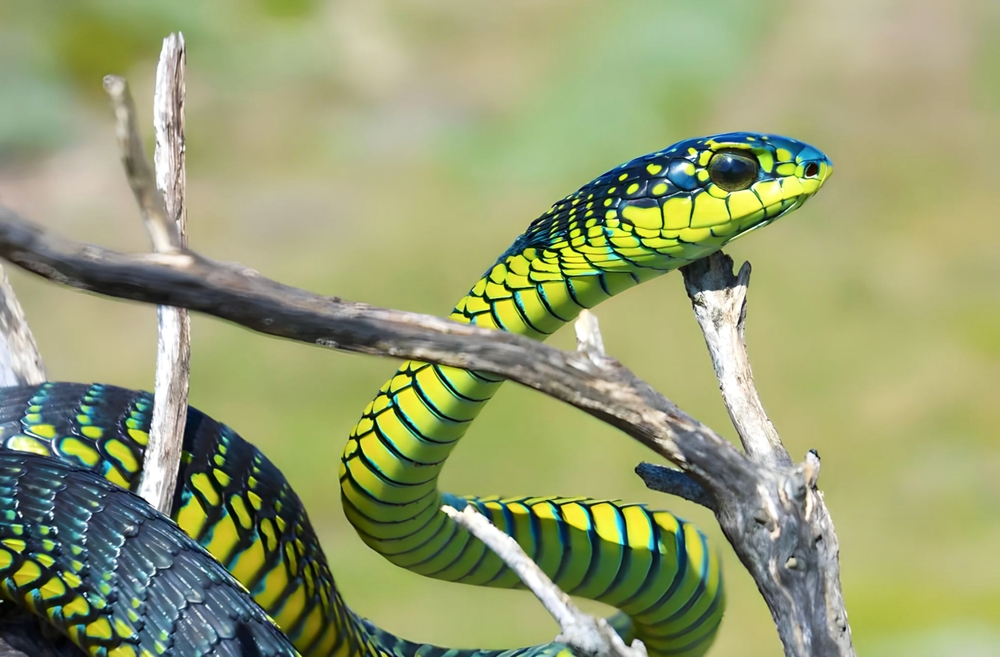
The boomslang is a tree-dwelling snake found in sub-Saharan Africa, known for its striking green color and large eyes. Despite its highly potent venom, the boomslang is reclusive and rarely bites humans. Its venom is hemotoxic, causing severe bleeding and tissue destruction. However, because the boomslang is shy and prefers to avoid human contact, bites are rare and fatalities even rarer.
If bitten, symptoms may not manifest immediately, making it crucial to seek medical attention as soon as possible. Antivenom is effective in treating boomslang bites, significantly reducing the risk of severe complications. It’s important to describe the snake accurately to healthcare providers for effective treatment. With prompt medical intervention, the likelihood of survival is very high.
10. The Quick-Striking Tiger Snake
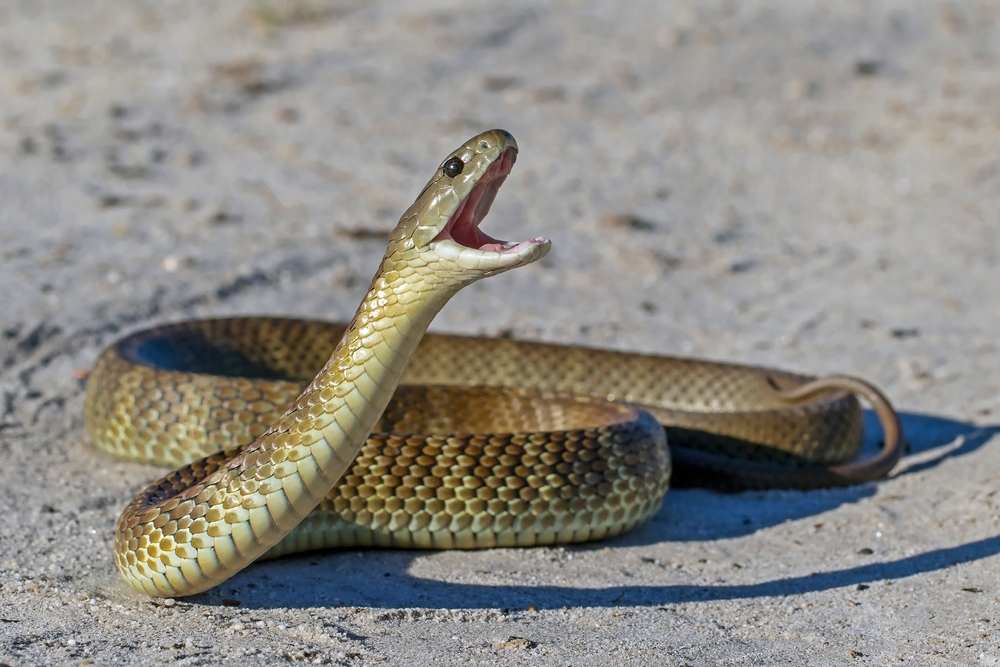
Native to Australia, the tiger snake is known for its banded appearance, reminiscent of a tiger. It is a highly venomous snake, and its bite can be deadly without treatment. However, tiger snakes are not typically aggressive, and bites are relatively uncommon. The venom affects the nervous system and can lead to paralysis. Yet, with the availability of anti-venom, fatalities are rare.
If you find yourself bitten by a tiger snake, it’s vital to keep calm and seek medical help immediately. Avoid walking or moving too much to prevent spreading the venom. Antivenom administration is crucial and should be done as soon as possible. With prompt treatment, recovery is very likely, demonstrating the power of modern medicine against even the deadliest snakes.
